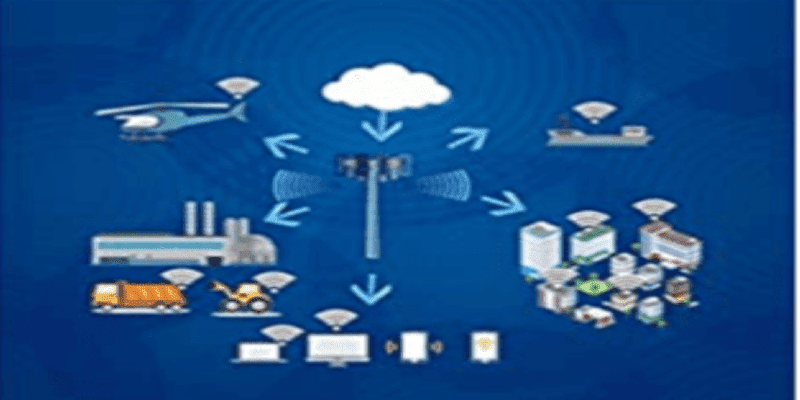
About Course
Evolution Of Air Interface is one of the most important elements that differentiate between 2G, 3G, 4G, and 5G. While 3G was CDMA based, 4G was OFDMA based; this course reveals the contents of the air interface for 5G.
While 4G brought in a deluge of infotainment services, 5G aims to provide extremely low delay services, great service in-crowd, enhanced mobile broadband (virtual reality being made real), ultra-reliable and secure connectivity, ubiquitous QoS, and highly energy-efficient networks.
The above-mentioned requirements are expected to be met by several advancements in technologies such as (i) new waveforms (termed as 5G NR, the new radio), (ii) millimeter wave technology, (iii) massive multiple antenna technologies (iv) nonorthogonal multiple access (v) heterogeneous networks such as small cells and device to device communications (vi) energy savings in the radio access network and (vii) ubiquitous quality of service among others. In this course, we aim to provide insight into the fundamentals of the above-mentioned methods, which are essential components of the 5G Air Interface.

We will begin with an overview of 5G technology aspects. Then we will discuss the 5G new radio waveform, its genesis, and variants. Thereafter we will introduce non-orthogonal multiple access schemes. Next, we will discuss various aspects of mm-wave communication technology. Massive MIMO will be presented next, wherein we will discuss the essential building blocks and design challenges. While all these will be discussed that propagation models that are essential for performance analysis will also be briefly presented.
This will be followed by performance analysis of heterogeneous networks including small cells and device-to-device communication. Then we will present energy-saving methods for radio access networks through multi-objective optimization. The final part of the course will touch upon the performance characterization of QoS for delay-sensitive traffic for radio access networks.
The intended audience includes research scholars who are interested to pursue 5G and beyond technologies to bring improvement in performance, which can make these technologies even more commercially viable. It is also expected to provide practicing engineers an opportunity
Evolution Of Air Interface INTENDED AUDIENCE: Senior undergraduate students, graduate-level students, MS and Ph.D. students, in the broad domain of telecommunications engineering who are interested to work further or even gather the latest developments in the domain of wireless communication technology leading to 5G Evolution Of Air Interface.
This Evolution Of Air Interface course is also suitable for practicing engineers in the domain of wireless communications who want to be familiar with the new technology changes that are expected to be engines of 5G Evolution Of Air Interface/radio access technology so that they can equip themselves with the new knowledge in a composite manner.
Course Content
Evolution Of Air Interface
-
Evolution of wireless Communication
00:00 -
Evolution of wireless Communication Standards From 2G to 5G (Part-I)
00:00 -
Evolution of wireless Communication Standards From 2G to 5G (Part-II)
00:00 -
Evolution of wireless Communication Standards From 2G to 5G (Part-III)
00:00 -
Evolution of wireless Communication Standards From 2G to 5G (Part-IV)
00:00 -
Requirements and operating scenarios of 5G
00:00 -
Requirements and operating scenarios of 5G (contd.)
00:00 -
5G scenarios
00:00 -
Ultra reliable low latency communication
00:00 -
Designing 5G new radio
00:00 -
Fundamental Framework for waveform analysis
00:00 -
Fundamental Framework for waveform analysis (cont.)
00:00 -
Waveform Design Aspects of 2G
00:00 -
Waveforms in 3G
00:00 -
Waveforms in 3G (cont.)
00:00 -
Waveform in 4G and 5G (OFDM)
00:00 -
Waveform in 4G and 5G (OFDM) contd.
00:00 -
Waveform in 4G and 5G (OFDM) contd.
00:00 -
Waveform in 4G and 5G (OFDMA)
00:00 -
Waveform in 4G and 5G (OFDMA, SCFDMA, SCFDE )
00:00 -
Waveform in 4G and 5G (SCFDMA cont.)
00:00 -
Waveform in 5G
00:00 -
Waveform in 5G Numerology
00:00 -
Frame Structure in 5G NR
00:00 -
Numerology in 5G and adaptive subcarrier bandwidth
00:00 -
Numerology in 5G (cont.)
00:00 -
Waveforms beyond 5G
00:00 -
Waveforms beyond 5G (cont.)
00:00 -
Waveforms beyond 5G (cont.)
00:00 -
Waveforms beyond 5G (cont.)
00:00 -
Waveform beyond 5G (Precoded GFDM)
00:00 -
Comparison of waveforms
00:00 -
Channel models for performance evaluation (Part I)
00:00 -
Channel models for performance evaluation (Part II)
00:00 -
Channel models for performance evaluation (Part III)
00:00 -
MIMO Signal Processing (Receive Diversity)
00:00 -
MIMO Signal Processing
00:00 -
MIMO Signal Processing Capacity
00:00 -
MIMO Signal Processing (Capacity & Massive MIMO)
00:00 -
Hybrid beamforming (mmWave)
00:00 -
NOMA
00:00
Student Ratings & Reviews

